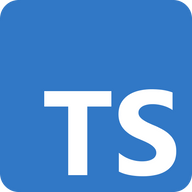Building React Applications with TypeScript: Benefits and Practical Implementation
Discover the benefits of using TypeScript in React applications and follow a step-by-step guide to create a simple app with a user form and list. Improve your code quality and development efficiency with TypeScript.
React is one of the most popular libraries for building user interfaces. Thanks to its flexibility and extensive ecosystem, React has gained immense popularity among developers. However, the complexity of modern web applications often requires additional tools to manage data types and minimize errors. This is where TypeScript comes into play.
TypeScript is a superset of JavaScript that adds static typing and other conveniences. Integrating TypeScript with React brings numerous benefits, which we will discuss below, followed by a practical implementation example.
Benefits of Using TypeScript in React
- Type Safety: TypeScript allows for declaring variable, function, and component types, significantly reducing the number of errors due to incorrect type usage. This helps identify and fix errors at compile time rather than at runtime.
- Better Code Documentation: Typing variables and functions also serves as documentation. This makes it easier for other developers (or ourselves after some time) to understand what values are expected and returned by various parts of the code.
- Intuitive Development Environment: Tools like Visual Studio Code offer excellent support for TypeScript, including code autocompletion, code navigation, and immediate error warnings. This makes programming faster and more enjoyable.
- Refactoring and Scalability: Thanks to static typing, refactoring code is easier and safer. TypeScript makes it easier to scale applications because errors are detected earlier, and the code structure is more predictable.
Practical Implementation Example: Creating a Simple Application with a Form
Below is a step-by-step guide on how to create a simple React application with a form to add users, using TypeScript.
Step 1: Project Initialization
First, initialize a new project using create-react-app with the TypeScript template:
npx create-react-app react-ts-example --template typescript
cd react-ts-exampleStep 2: Project Structure
Our application will have two main components:
UserForm: a form to add new usersUserList: a list of added users
Step 3: Creating Components
UserForm.tsx:
import React, { useState } from 'react';
interface UserFormProps {
addUser: (user: User) => void;
}
interface User {
name: string;
email: string;
}
const UserForm: React.FC<UserFormProps> = ({ addUser }) => {
const [name, setName] = useState('');
const [email, setEmail] = useState('');
const handleSubmit = (e: React.FormEvent) => {
e.preventDefault();
addUser({ name, email });
setName('');
setEmail('');
};
return (
<form onSubmit={handleSubmit}>
<div>
<label>Name:</label>
<input type="text" value={name} onChange={(e) => setName(e.target.value)} />
</div>
<div>
<label>Email:</label>
<input type="email" value={email} onChange={(e) => setEmail(e.target.value)} />
</div>
<button type="submit">Add User</button>
</form>
);
};
export default UserForm;
UserList.tsx:
import React from 'react';
interface UserListProps {
users: User[];
}
interface User {
name: string;
email: string;
}
const UserList: React.FC<UserListProps> = ({ users }) => {
return (
<ul>
{users.map((user, index) => (
<li key={index}>
{user.name} ({user.email})
</li>
))}
</ul>
);
};
export default UserList;
Step 4: Integrating Components into the Application
App.tsx:
import React, { useState } from 'react';
import UserForm from './UserForm';
import UserList from './UserList';
interface User {
name: string;
email: string;
}
const App: React.FC = () => {
const [users, setUsers] = useState<User[]>([]);
const addUser = (user: User) => {
setUsers([...users, user]);
};
return (
<div className="App">
<h1>User Management</h1>
<UserForm addUser={addUser} />
<UserList users={users} />
</div>
);
};
export default App;
Step 5: Running the Application
Now we can run our application:
npm start
Upon opening the application in the browser, we should see a form for adding users and a list of added users.
Conclusion
Using TypeScript in React applications brings many benefits, such as better code readability, fewer errors, and better development tool support. Our simple example demonstrates how easy it is to integrate TypeScript with React and enjoy its advantages. We encourage you to experiment and implement TypeScript in your projects to improve code quality and development efficiency.

